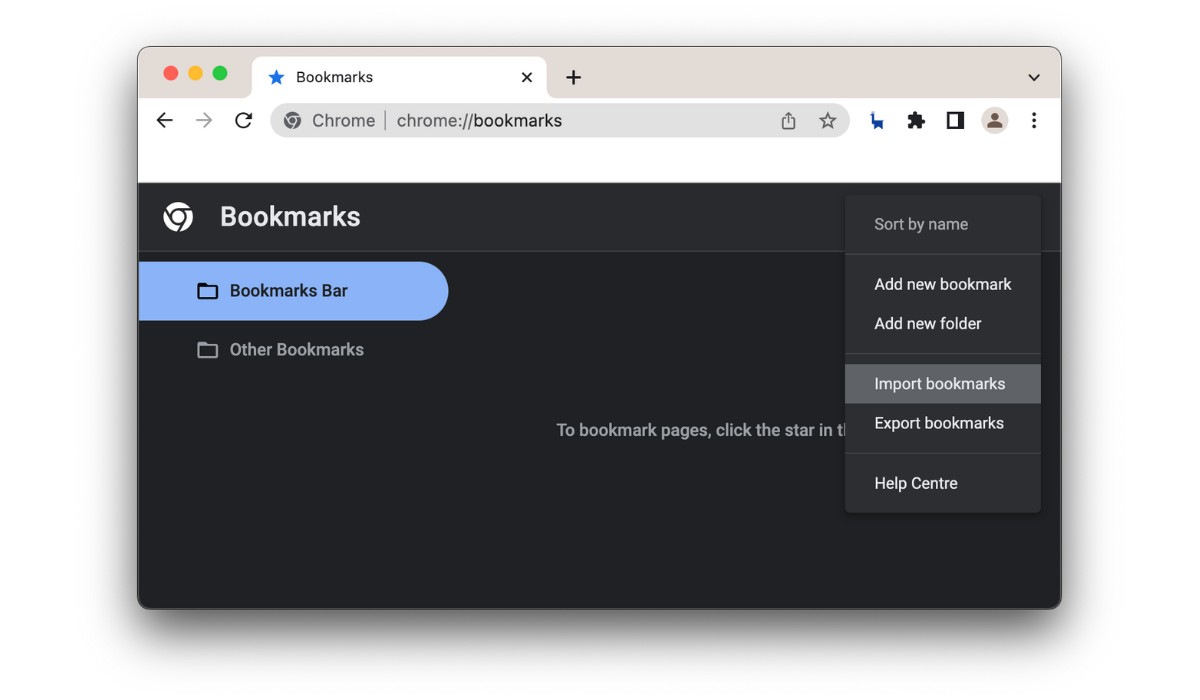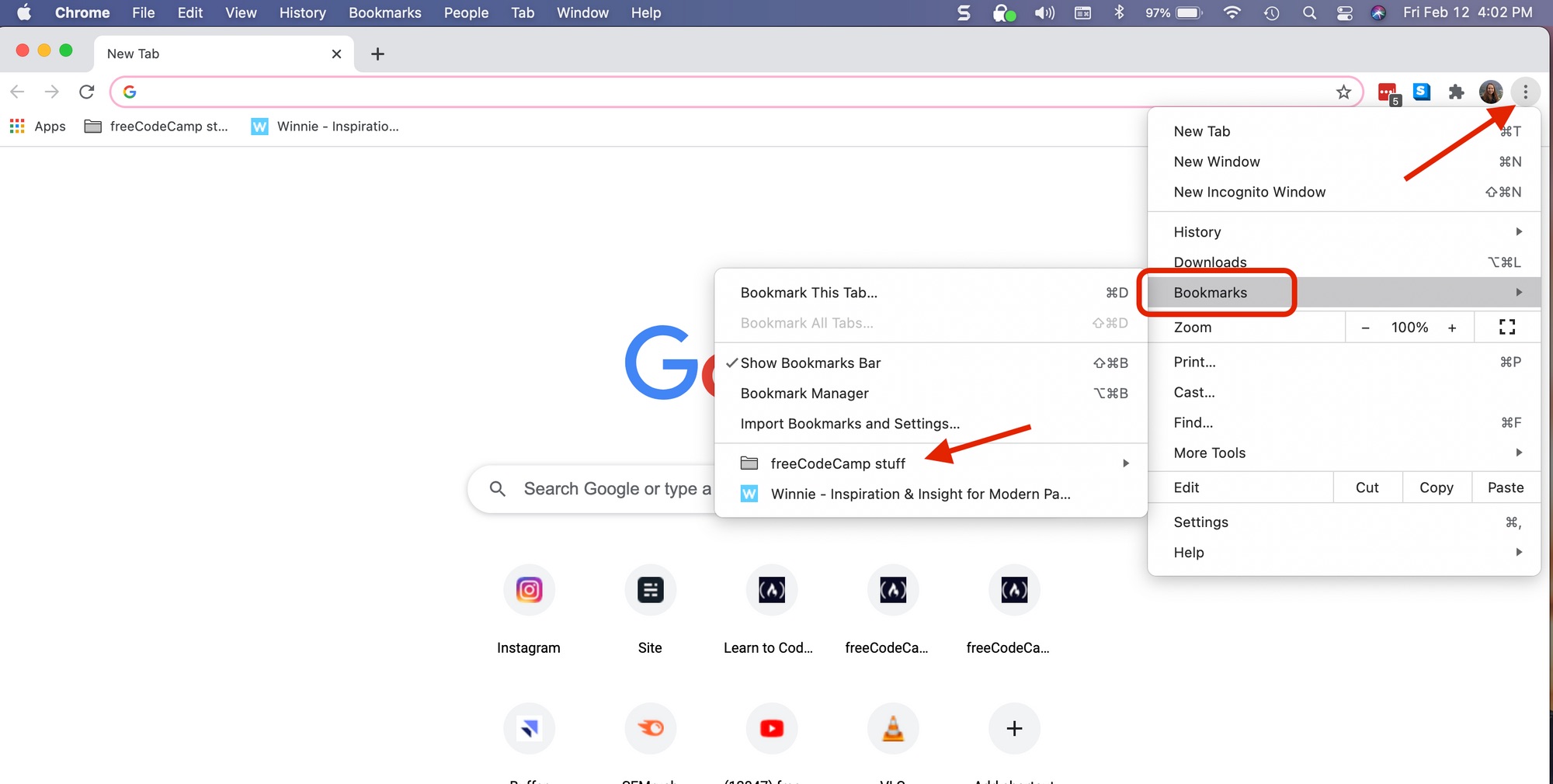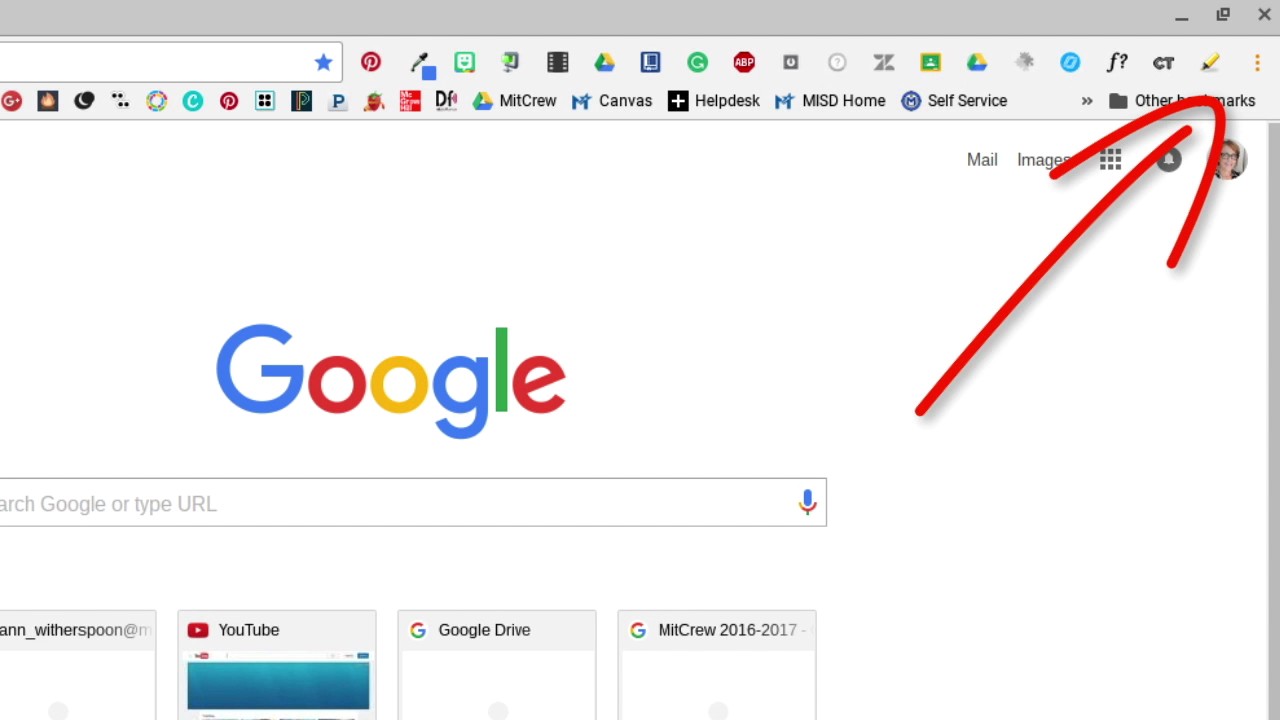Introduction
When it comes to web browsing, Google Chrome stands out as one of the most popular and feature-rich browsers available. Its user-friendly interface, seamless synchronization across devices, and extensive range of extensions make it a top choice for millions of users worldwide. One of the key features that enhances the browsing experience is the ability to save and access favorite websites with ease. Whether it's a frequently visited blog, an essential work-related page, or a beloved online store, having quick access to these sites is a time-saving convenience.
In this article, we'll delve into the intricacies of Chrome favorites and explore their storage locations across various platforms. Understanding where Chrome favorites are saved can be beneficial for several reasons. It allows users to back up their favorite links, transfer them to a new device, or troubleshoot issues related to favorites not appearing as expected. By gaining insight into the specific locations where Chrome favorites are stored, users can effectively manage and organize their browsing experience.
Now, let's embark on a journey to uncover the hidden pathways where Chrome diligently stores our cherished collection of favorite websites. Whether you're using a Windows PC, a Mac, an Android device, or an iOS device, we'll guide you through the process of locating your Chrome favorites, empowering you to take control of your browsing experience.
Location of Chrome Favorites on Windows
On Windows, Google Chrome stores your favorite websites in a specific folder within your user profile directory. This folder is typically hidden from plain view, but with a few simple steps, you can easily navigate to it.
To access the location of Chrome favorites on Windows, follow these steps:
-
Open File Explorer: Navigate to the "C:" drive on your computer and locate the "Users" folder. Within the "Users" folder, you'll find a folder with your Windows username. This is your user profile directory.
-
Reveal Hidden Items: By default, certain folders and files are hidden in Windows. To reveal these hidden items, click on the "View" tab in File Explorer and check the "Hidden items" box. This will unveil the hidden folders and files within your user profile directory.
-
Locate the AppData Folder: Within your user profile directory, you'll find a folder named "AppData." This folder is typically hidden, so it might not be visible unless you've enabled the option to show hidden items.
-
Navigate to Local > Google > Chrome > User Data: Within the "AppData" folder, navigate to "Local," followed by "Google," "Chrome," and "User Data." This is where Chrome stores various user-specific data, including your bookmarks and favorites.
-
Access the Default Folder: Within the "User Data" folder, you'll find a folder named "Default." This folder contains all the user-specific settings and data for your Chrome profile, including your favorite websites.
-
Locate the Bookmarks File: The file that stores your Chrome favorites is named "Bookmarks." It's a JSON file that contains the URLs and titles of your saved favorite websites.
By following these steps, you can access the location where Chrome stores your favorite websites on a Windows PC. This knowledge can be valuable for backing up your favorites, transferring them to a new computer, or troubleshooting issues related to bookmarks and favorites not syncing correctly.
Understanding the location of Chrome favorites on Windows empowers users to take control of their browsing experience and manage their favorite websites more effectively. Whether you're a casual user or a power user, having this insight can enhance your overall browsing experience and streamline the way you access your cherished collection of favorite websites.
Location of Chrome Favorites on Mac
On a Mac, Google Chrome stores your favorite websites in a specific directory within the user's Library folder. This directory is where Chrome keeps various user-specific data, including bookmarks, settings, and extensions. However, accessing this location requires navigating through the Library folder, which is hidden by default in macOS. Here's how you can locate the Chrome favorites on your Mac:
-
Open Finder: Launch the Finder application on your Mac. The Finder is where you can access and manage files, folders, and applications on your computer.
-
Go to the Menu Bar: Click on "Go" in the menu bar at the top of the screen. A drop-down menu will appear.
-
Access the Library Folder: While holding down the "Option" key on your keyboard, you'll notice that the "Library" option appears in the drop-down menu under "Go." Click on "Library" while still holding down the "Option" key. This action will directly take you to the Library folder, which is typically hidden from plain view.
-
Navigate to Application Support: Within the Library folder, locate and open the "Application Support" folder. This folder contains application-specific data, including user settings and configurations.
-
Find the Google Folder: Inside the "Application Support" folder, you'll find a folder named "Google." Open this folder to access Google Chrome's user-specific data.
-
Locate the Default Folder: Within the "Google" folder, you'll find a folder named "Default." This folder contains user-specific settings and data for your Chrome profile, including your favorite websites.
-
Access the Bookmarks File: The file that stores your Chrome favorites is named "Bookmarks." It's a JSON file that contains the URLs and titles of your saved favorite websites.
By following these steps, you can access the location where Chrome stores your favorite websites on a Mac. This knowledge can be valuable for backing up your favorites, transferring them to a new Mac, or troubleshooting issues related to bookmarks and favorites not syncing correctly.
Understanding the location of Chrome favorites on a Mac empowers users to take control of their browsing experience and manage their favorite websites more effectively. Whether you're a casual user or a power user, having this insight can enhance your overall browsing experience and streamline the way you access your cherished collection of favorite websites on your Mac.
Location of Chrome Favorites on Android
On Android devices, Google Chrome provides a seamless browsing experience, allowing users to save and access their favorite websites with ease. The location where Chrome stores these favorites on an Android device is within the app's data directory. While accessing this directory may not be as straightforward as on a computer, understanding the location of Chrome favorites on Android can be beneficial for various purposes, such as backing up favorite links, transferring them to a new device, or troubleshooting issues related to favorites not appearing as expected.
To access the location of Chrome favorites on an Android device, you'll need a file manager app that allows you to explore the device's internal storage. Here's a step-by-step guide to locating Chrome favorites on an Android device:
-
Open the File Manager App: Launch the file manager app on your Android device. If you don't have a file manager app installed, you can download one from the Google Play Store.
-
Navigate to the App Data Directory: Within the file manager app, navigate to the internal storage of your device. Look for the "Android" folder, which contains app-specific data.
-
Access the Chrome Data: Within the "Android" folder, locate and open the "data" directory. This is where the data for various installed apps, including Chrome, is stored.
-
Locate the Chrome Folder: Inside the "data" directory, you'll find a folder named "com.android.chrome." This folder contains the app-specific data for Google Chrome.
-
Explore the User Data: Within the "com.android.chrome" folder, navigate to the "User Data" directory. This is where Chrome stores user-specific data, including bookmarks and favorites.
-
Access the Bookmarks File: Within the "User Data" directory, you'll find a file named "Bookmarks." This file contains the URLs and titles of your saved favorite websites.
By following these steps, you can access the location where Chrome stores your favorite websites on an Android device. This knowledge empowers users to take control of their browsing experience and manage their favorite websites more effectively on their Android devices.
Understanding the location of Chrome favorites on Android enables users to make informed decisions about managing their favorite websites, whether it's for personal convenience, data backup, or troubleshooting purposes. With this insight, users can navigate the intricacies of Chrome's data storage on their Android devices, enhancing their overall browsing experience and ensuring seamless access to their cherished collection of favorite websites.
Location of Chrome Favorites on iOS
On iOS devices, such as iPhones and iPads, Google Chrome offers a robust browsing experience, complete with the ability to save and access favorite websites effortlessly. However, the location where Chrome stores these favorites on iOS devices is not as readily accessible as on a computer. Understanding the specific location of Chrome favorites on iOS can be valuable for various purposes, including backing up favorite links, transferring them to a new device, or troubleshooting issues related to favorites not appearing as expected.
To access the location of Chrome favorites on an iOS device, users need to navigate through the app's data storage, which is not directly exposed through the iOS interface. While iOS has limitations in terms of file system access, users can still gain insight into the location of Chrome favorites through the app's internal data storage. Here's a step-by-step guide to locating Chrome favorites on an iOS device:
-
Open the Files App: Launch the Files app on your iOS device. The Files app provides access to the device's internal storage and allows users to manage files and folders.
-
Navigate to On My iPhone/iPad: Within the Files app, tap on "On My iPhone" or "On My iPad" to access the local storage of the device.
-
Find the Chrome Data: Look for the "Google Chrome" folder within the local storage. This folder contains the app-specific data for Google Chrome, including user settings and configurations.
-
Explore the User Data: Within the "Google Chrome" folder, navigate to the "User Data" directory. This is where Chrome stores user-specific data, including bookmarks and favorites.
-
Access the Bookmarks File: Within the "User Data" directory, you'll find a file named "Bookmarks." This file contains the URLs and titles of your saved favorite websites.
By following these steps, users can access the location where Chrome stores their favorite websites on an iOS device. While iOS imposes certain restrictions on file system access, understanding the location of Chrome favorites empowers users to manage their favorite websites effectively on their iPhones and iPads.
Having insight into the location of Chrome favorites on iOS enables users to make informed decisions about managing their favorite websites, whether it's for personal convenience, data backup, or troubleshooting purposes. With this knowledge, users can navigate the intricacies of Chrome's data storage on their iOS devices, enhancing their overall browsing experience and ensuring seamless access to their cherished collection of favorite websites.
Conclusion
Understanding the specific locations where Google Chrome stores favorites across different platforms empowers users to take control of their browsing experience. Whether using a Windows PC, a Mac, an Android device, or an iOS device, the ability to access and manage favorite websites efficiently enhances the overall browsing journey.
By uncovering the pathways to Chrome favorites on Windows, users gain the knowledge to navigate through the user profile directory and locate the "Bookmarks" file. This insight enables them to back up their favorite links, transfer them to new devices, and troubleshoot any synchronization issues, ultimately ensuring a seamless browsing experience.
Similarly, on Mac devices, the process of accessing Chrome favorites involves navigating through the Library folder, revealing the "Bookmarks" file within the user-specific data directory. This understanding empowers Mac users to effectively manage their favorite websites, whether it's for data backup, transfer, or troubleshooting purposes.
For Android users, the ability to explore the app's data directory through a file manager app unveils the location of the "Bookmarks" file, providing valuable insight into managing favorite websites on their devices. This knowledge allows Android users to make informed decisions about their favorite links, ensuring convenient access and seamless synchronization.
On iOS devices, where file system access is more restricted, users can still gain insight into the location of Chrome favorites through the app's internal data storage. This understanding enables iOS users to effectively manage their favorite websites, enhancing their browsing experience and ensuring seamless access to their cherished collection of favorite websites.
In conclusion, the knowledge of where Chrome favorites are saved on different platforms empowers users to maintain control over their browsing experience. Whether it's for data backup, transfer, or troubleshooting, understanding these locations enhances the overall browsing journey, ensuring that favorite websites are readily accessible and synchronized across devices. With this insight, users can navigate the intricacies of Chrome's data storage, ultimately enhancing their browsing experience and ensuring seamless access to their cherished collection of favorite websites.

























